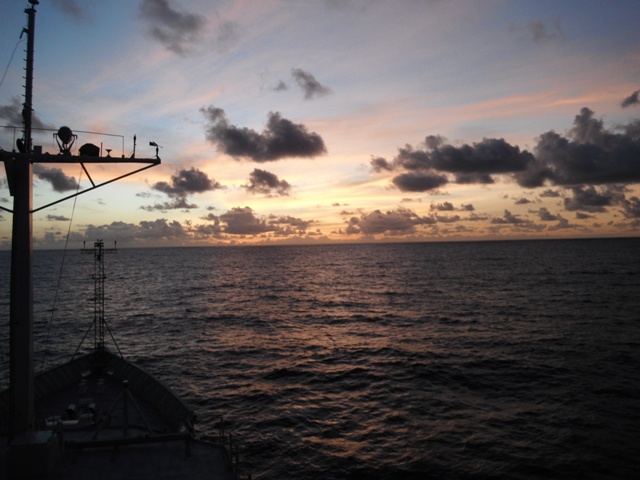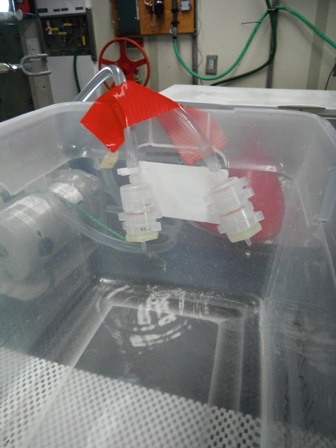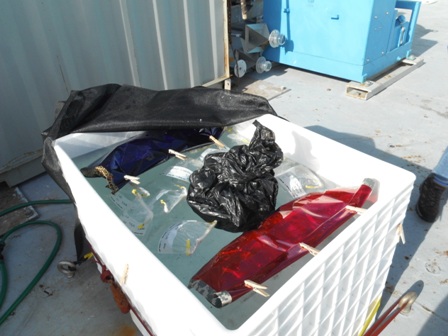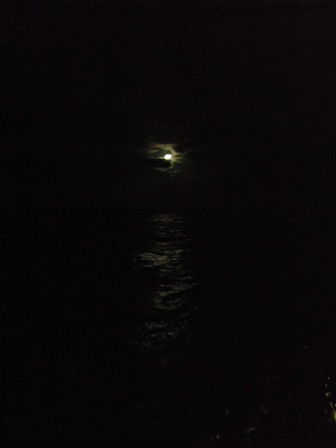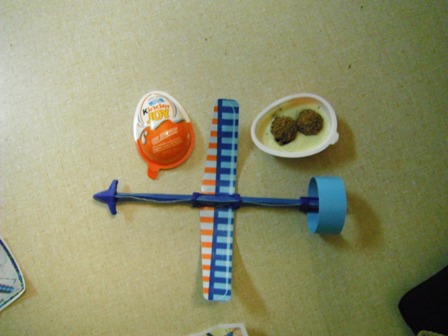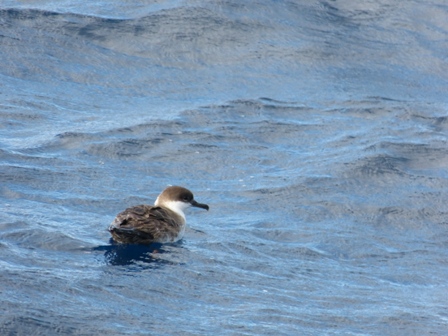Another link to the Deep DOM blog with footage of the RV Knorr from the Captain’s remote control plane.
Monthly Archives: April 2013
Viruses of the Deep Ocean
Check out a blog post about my viral work on this research expedition which has been posted on the WHOI official blog Deep DOM blog.
We are over halfway through our trip, in both distance and time at sea. Research is going well and morale is much higher since we crossed the equator. There are 19 new Shellbacks aboard the R/V Knorr now!
About a week and a half ago we reached our easternmost point of the trip. Because we have kept the ship on Uruguayan time the sun was rising at about 4:15AM. As we transit West now, the ship is following sunsets and our evening tracks follow moonlit highways.
We are now approaching our Amazon River Plume stations and I’m looking forward to setting up a few more collaborative experiments and continuing my viral work at sea.
10 Days at Sea
The first ten days seem to have lasted three weeks and also flown by. Science is 24/7 onboard the R/V Knorr. We spent three days at our first mega station, in which I filtered about 260L of water to collect samples for analyzing viral abundance and diversity. I also processed an additional 20L of water to run a set of experiments for the Biological Oceanography course at Cornell. Since the mega station we have covered two small and one intermediate station and we’re now steaming on to the next station. I think my personal water budget is up to ~350L, so much science!
Filtering for viruses
Class experiment set up
In addition to our own work, each scientist is responsible for a rotating watch schedule. When on watch we assist others with their work and help deploy and retrieve any scientific equipment that goes overboard for sampling. My first five days were on the 0000-0800 watch which meant I got to help retrieve McLane pumps for the one of the other research groups and also got to see beautiful moonscapes and sunrises. I’ve transitioned to the 1600-0000 watch and got to assist with my first CTD retrieval yesterday. The CTD is attached to a wire with a rosette of niskin sampling bottles. This wire gets lowered to depths the science team wants, this trip is focused on deep water and our deepest cast so far has been 5300+ meters. Once the depth we want is reached we can close the niskin bottles and capture water at that depth. The rosette is then slowly brought from depth to the surface, capturing water at different depths along the way. When the rosette reaches the surface we bring it on deck and then collect our individual samples from the big niskin bottles.
Moonscape
Besides science I’ve had a bit of time to take my ukulele or book out on deck and enjoy the sun for a bit. The science and boat crews are extremely pleasant and I’ve really been enjoying chatting and scheming about experiments to run and how the ship works. Last Sunday I treated myself to a Kinder Joy egg for Easter (obtained back in Montevideo), the ship did a nice brunch and one of the faculty on the ship brought egg chocolate malt balls. By far the best Easter treat were the Pilot Whales which tracked along with our boat for a while we were recovering some of the particle traps. See the official DeepDOM blog for a video by Colleen Durkin and Ben Van Mooy.
Kinder Joy: airplane!
Besides whales, we’ve seen a few different albatross (Wandering and Yellow-Nosed), a dark petrel (probably Great-Winged), and the tons of the Great Shearwaters. In plankton tows we’ve seen lots of really cool blue copepods and assorted zooplankton, ctenophores and tons of phytoplankton. As we move north it’s getting warmer and warmer, and we’re still only at latitude 28S. Onward!
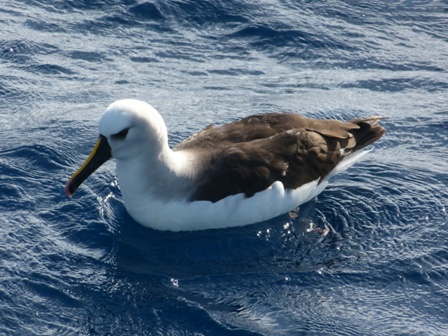 Great Shearwater (upper), Yellow-nosed Albatross (lower) from Colleen Durkin
Great Shearwater (upper), Yellow-nosed Albatross (lower) from Colleen Durkin
